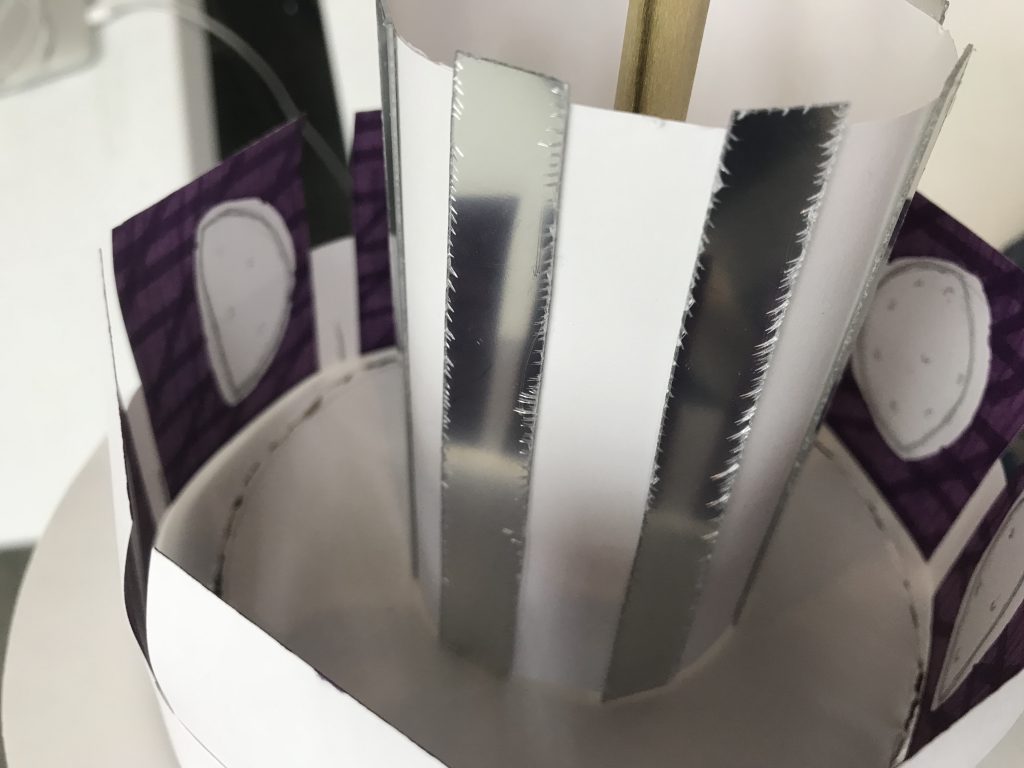




For my vision machine I constructed a zoetrope. A zoetrope is an early animation machine used in the 19th century. This pre cinematic machine was replicated in processing. It was easy to see the similarities between the flickering animation of our code to what was created with our paper and cardboard machines. I found my processing animation machine and my paper animation machine to be very similar creations in different ways. My processing machine I used flashes of light to create abstract legs moving in space, full of noise. It was disorienting, but in a more serve way than my paper machine. My paper machine was meant to be more of a struggle to understand. I wanted less distortion and more frustration through the noise created by the machine. I For this machine I used eight panels to display the phases of the moon.
I used the scientific categorization of the moon phases as a jumping off point for my project. I used one of the supplied disks as a base for my zoetrope. The hole supplied in the disk was too large, so I used a rolled up length of paper to create a telescope like structure to support the wooden stick used to spin the machine to create the image. In my zoetrope I also utilized the reflective sticky paper to give the image more depth.
My machine investigates vision through the distortion of the image. My machine does not provide a smooth image or transition between the phases. The jumps between one phase to the next are large jumps, meant to throw the viewer into an uncomfortable version of the moons transition. The same goes for the silver reflective paper. Its purpose was to further complicate the image. While designing the machine I created a prototype version to test out how well exactly the machine worked. For this version I flipped two of the phases. I also made the image very light as to make the image hard to figure out. In my final version I decided that in order for the image to actually be recognizable I had to make the background dark so the moon would actually be recognizable. I wanted the machine to create visual noise and confusion. The first time I tested my machine (using the long strip of paper shown above) the amount of noise created was not quite right. Not that the machine didn’t create visual noise, but it wasn’t displaying enough of the imagine in order for the machine to even give the illusion that it worked. The image was not dark enough to be reflected onto the silver paper. The input to the machine was not enough to allow for the machines output to be successful.
The zoetrope is one of the pre-cinematic machines of the Victorian age. My using motion, these machines are able to achieve the illusion of motion. I chose this particular machine because I thought I would have to most room to play with distortion the most with the zoetrope.
I was most influenced in a very roundabout way by Rokeby and its ideas of obscurity. While I did not focus so much on the aspects of sociability, I thought the idea of obscuring the lines of communication where very interesting.


